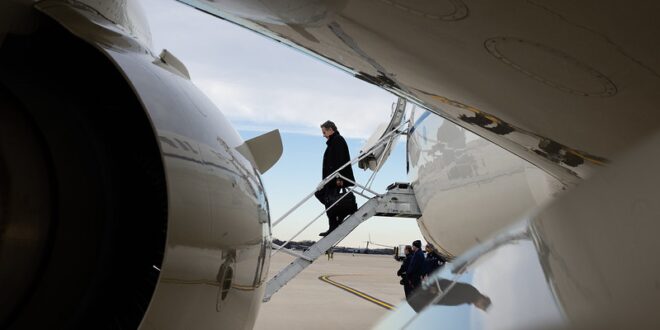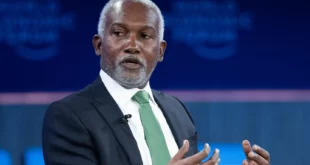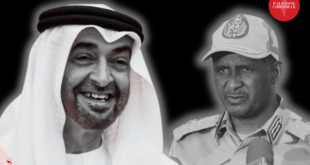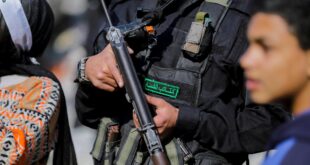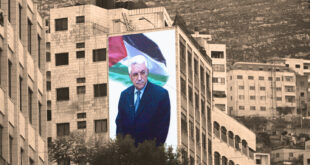U.S. Secretary of State Antony Blinken is making his first visit to a region that is roiled by Russia’s invasion of Ukraine but still loyal to Moscow, while bloody crackdowns have overshadowed reform drives initiated in Central Asia’s two largest countries — Kazakhstan and Uzbekistan.
In another sense, the environment that the post’s current holder, Antony Blinken, is likely to encounter after touching down in the Kazakh capital, Astana, on February 28 will be a familiar one.
Long one of the world’s most authoritarian neighborhoods, Central Asia is perhaps even less democratic now than it was three years ago when it welcomed Blinken’s predecessor, Mike Pompeo.
It also remains — in Pompeo’s understated coining — a region that sees “a lot of activity — Chinese activity, Russian activity.”
But for the Central Asian states, does Blinken’s visit one year since Russia’s invasion offer anything other than complications, as suspicious allies watch from the sidelines?
In a press briefing ahead of Blinken’s visit, Assistant Secretary of State for South Central Asia Donald Lu acknowledged “pressure that the economies and societies of this part of the world are under” — something to which Western-led sanctions against Central Asia’s major trade partner Russia have undoubtedly added.
“Our main goal is to show that the United States is a reliable partner, and we see the difficulties that these economies are facing,” said Lu, listing “high food prices, high fuel prices, high unemployment, difficulty in exporting their goods, slow post-COVID recovery, and a large influx of migrants from Russia” fleeing conscription as key challenges.
But Lu also indicated that observance of the sanctions would be part of Blinken’s conversations in the region.
“There is real progress that we have seen as a result of these sanctions in decoupling aspects of the Central Asian economy from Russia. And we’re going to continue to encourage Central Asian republics along this direction,” Lu told reporters on February 24.
‘The Same Old Fear Of Russia’
Central Asia’s place on the geopolitical map was reinforced by a vote at the United Nations on February 23 that called for an immediate end to the Russian invasion of Ukraine and the removal of Russian forces from Ukrainian territory.
Kazakhstan, Kyrgyzstan, Tajikistan, and Uzbekistan were among just 32 countries that abstained from voting on the resolution that passed with 141 countries voting in favor and seven countries — including China, Belarus, and Russia — voting against.
Turkmenistan, recognized as a neutral country, did not vote at all.
Two days after the vote, the Kazakh Foreign Ministry described as “worthy of support” a position paper on Ukraine published by Moscow’s partner, Beijing, that U.S. President Joe Biden had earlier doubted “would be beneficial to anyone except Russia” if it was implemented.
Although China’s document paid lip service to the territorial integrity of all states, it refrained from criticism of Russia and advocated the end of Western-led sanctions against its ally.
Kazakhstan has also criticized sanctions independently, while Astana’s pledge to nevertheless uphold them has seen several Russian politicians and public figures shower its leadership with contempt and — in some cases — threats of a Ukraine-style invasion.
“When we talk about the neutral position of Central Asian countries, it is not really neutrality but just the same old fear of Russia,” said Anvar Nozirov, an analyst based in Tashkent, the Uzbek capital.
Yet Nozirov argued that Washington can still play a necessary role in the region despite Moscow and Beijing’s dominance.
“There are many problems in the region that are only intensifying, whether it is climate change, water shortages, energy shortages and, of course, Afghanistan under the Taliban again,” Nozirov said, calling the withdrawal of coalition forces from the country that borders Tajikistan, Turkmenistan, and Uzbekistan “disastrous.”
“Russia has never fully solved these problems, and China’s solutions are mostly limited to its business interests. Central Asia is still isolated in many ways, and the war launched by Russia has only made new problems for citizens of our countries,” Nozirov said.
A Useful Format?
Blinken is scheduled to hold talks with Kazakh President Qasym-Zhomart Toqaev prior to his meeting with the five countries’ foreign ministers in a 5+1 format and will subsequently travel to Uzbekistan for meetings with the leadership there before heading to India.
In doing so, Blinken will visit the region’s two biggest states, where reform narratives have been challenged by decidedly undemocratic facts on the ground.
In Kazakhstan, foreign missions including Washington have called for fair and transparent investigations into violence that left at least 238 people dead at the beginning of 2022, yet only a handful of servicemen were convicted of abuses perpetrated during the unrest, while hundreds of protesters were thrown in jail.
Toqaev has proclaimed a “new Kazakhstan” in the wake of the violence that saw the influence of his long-reigning predecessor, Nursultan Nazarbaev, and his family, seriously diminished — and Kazakh political analyst Gaziz Abishev told RFE/RL he believes some of Toqaev’s moves are promising.
“Post-authoritarian transformations are always difficult, but I believe that in many ways the situation is better than under Nazarbaev,” said Abishev, citing the swell of opposition politicians planning to compete as candidates for parliament in elections due next month thanks to changes in the electoral laws.
On the eve of Blinken’s visit, however, several would-be candidates were complaining of being excluded from the vote over errors in their tax declarations, and Kazakhstan has also witnessed attacks on critical journalists in recent weeks.
When Pompeo traveled to Tashkent in 2020, Uzbekistan had just been crowned the Economist magazine’s “country of the year” for the reforms pushed through by President Shavkat Mirziyoev, who came to power in 2016 after the death of the isolationist hard-liner that he served under as prime minister, Islam Karimov.
But last year government troops crushed protests in the autonomous region of Karakalpakstan where now-scrapped plans to change the territory’s constitutional status set in motion events that left 21 people dead, according to an official toll.
Raising the issue of rights in Central Asia has often proved tricky territory for Washington.
Nor have the region’s countries always welcomed U.S. officials decrying their strategic partners’ abuses.
In 2020, Pompeo made China’s massive repression in Beijing’s Central Asia-neighboring, Muslim-majority Xinjiang Province a key theme of his visit, triggering a furious Chinese response.
He also got a polite reprimand from Uzbekistan’s then-foreign minister, Abdulaziz Kamilov, who stated his country’s desire to avoid “unfavorable political consequences in relation to competition between large powers in our region.”
Although Blinken is making his first visit to Central Asia, he has met his Central Asian counterparts in the past, most recently at the United Nations in New York in September.
The United States is one of several countries to pursue “5+1” meetings with the states of Central Asia.
Last year, Tajikistan’s veteran autocratic leader, Emomali Rahmon, suggested he was growing weary of the format when he upbraided Russian President Vladimir Putin in a remarkable diatribe during a meeting between the Russian leader and his five Central Asian counterparts.
“America plus Central Asia, South Korea plus Central Asia, Japan plus Central Asia. Soon there will probably be Pakistan plus Central Asia,” Rahmon complained.
But Abishev, the commentator, maintained that the format had some benefits, mostly due to its potential to foster integration beyond the terms of countries that have typically wielded power in the region.
“I think it is good for our sovereignty and independence, because firstly it brings the countries of the region together. One by one, a country like Russia could divide or destroy us, but if we are united it will be much harder,” Abishev said.
 Eurasia Press & News
Eurasia Press & News
